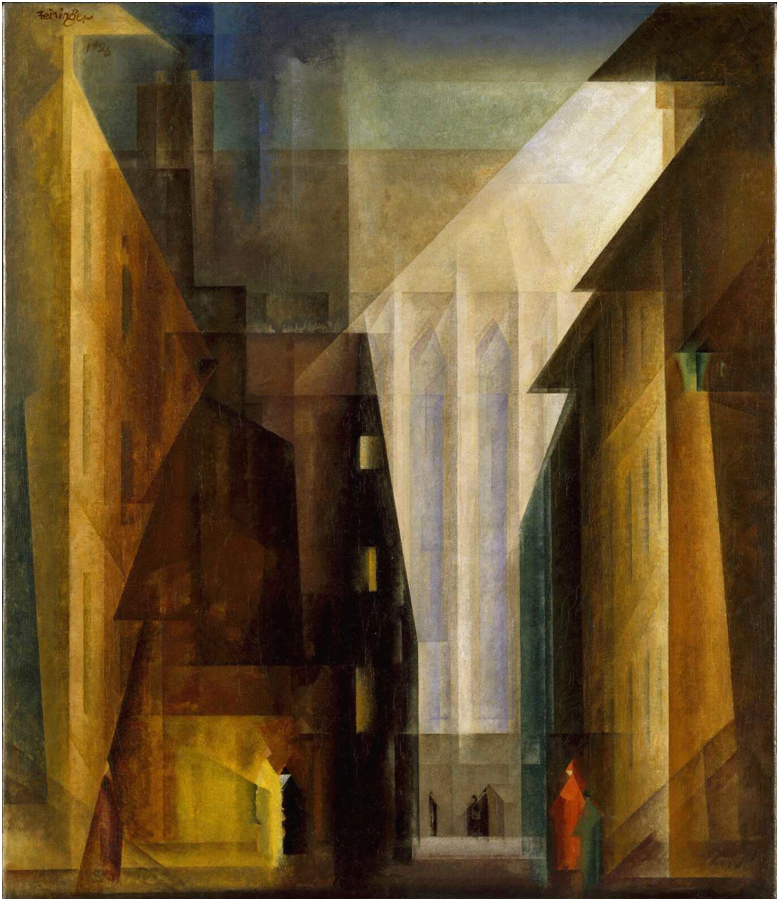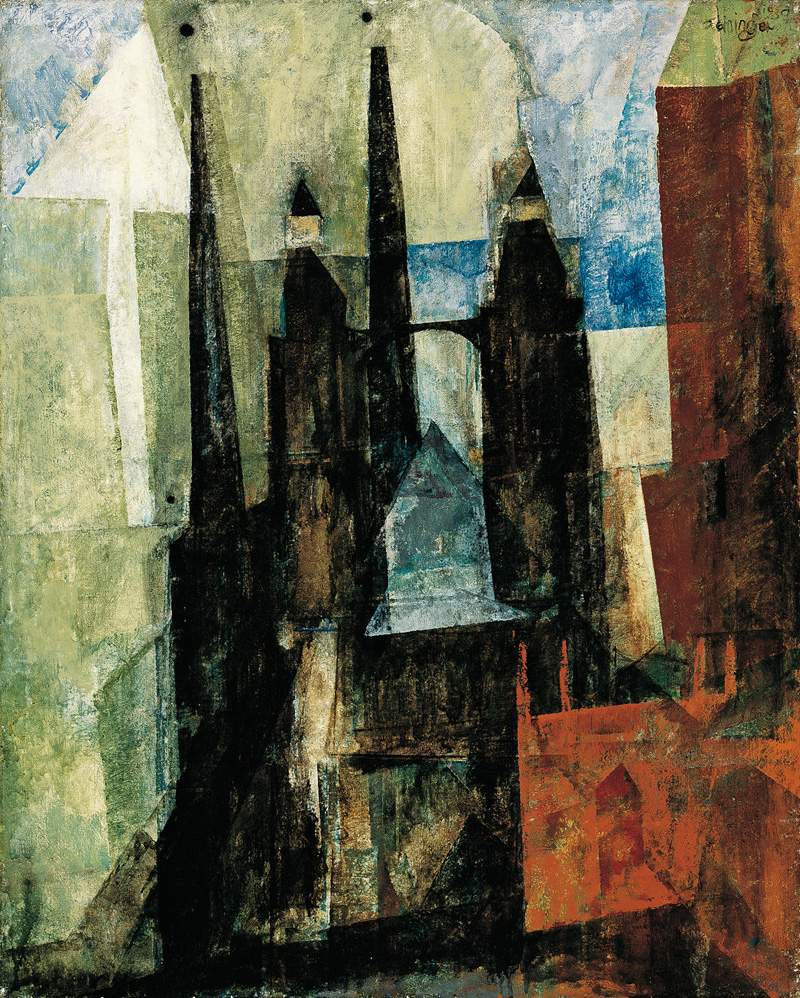What of Ernst Cassirer? Hans Sluga wrote a few months ago:
Cassirer does not get close in stature to the much more problematic Heidegger, and he certainly also lacks the philosophical radicalism of a Wittgenstein, Foucault, or Derrida and the incisive scientific acumen of a Russell, Quine, or Rawls. Attempts to revive his fortunes are, I am afraid, doomed to failure.
Hans Sluga, Review of Peter E. Gordon’s Continental Divide: Heidegger, Cassirer, Davos
The two words “stature” and “radicalism” should awaken suspicion at the terms of the judgment. They also hint at one possible reason why so much of the recent press on Cassirer has been lukewarm or dismissive: He is too reasonable.
First, a little context: hyper-learned philosophy scholar Frederick Beiser, who is also an avowed exponent of the cultural-historical tradition of which Cassirer was a part, recently criticized a history of 19th century continental philosophy for being, essentially, a dictionary of received ideas, an anthology of current trends and little else:
The editors might grumble here that in chiding them for not including Trendelenburg, Lotze and the neo-Kantians I have not judged them by their own criteria. For their volume is meant to describe “revolutionary responses to the existing order“, and Trendelenburg, Lotze and the neo-Kantians were not revolutionary; indeed, they represented the establishment and existing order, given their opposition to materialism and given their ensconced place in German university life.
It is precisely here, however, that it is necessary to raise questions about the editors’ criteria and their guiding themes of “revolutionary responses to the existing order.” That theme is so vague and equivocal that it signifies contradictory viewpoints. The revolutionary response to the existing order can mean the revolution on behalf of modern values by Feuerbach, Marx and the German materialists; or it can also mean the reaction against modern values by Kierkegaard, Dostoyevsky and Nietzsche. The existing order can be pre-secular, non-liberal and monarchical society prior to 1848, the remaining traces of the ancien régime; and it can also be the more secular, liberal and democratic order circa 1870. The editors never spell out this ambiguity; they simply exploit it, so that they have a convenient device for including everyone according to the exigencies of the standard curriculum.
Behind the editors’ theme of “revolutionary responses to the existing order” there lies an old myth, one that the editors have scarcely articulated yet tacitly adopted: namely, that the important philosophy of the nineteenth century came not from “academic philosophers” but from the radical individual thinkers outside the university, viz., from such solitary thinkers as Kierkegaard, Dostoyevsky, Nietzsche and Schopenhauer.
Not the least troublesome aspect of this myth is that some of these so-called revolutionary thinkers were themselves deeply reactionary. It is only by turning a blind eye to Nietzsche’s reactionary politics and to Kierkegaard’s and Dostoyevsky’s fundamentalist Christianity that it is possible to make them relevant to us today. Any impartial contemporary student of nineteenth-century philosophy who knows the movement in all its breadth will find Cohen, Simmel and Weber more sympathetic company than Kierkegaard, Nietzsche or Dostoyevsky.
Frederick Beiser, Review of Alan D. Schrift and Daniel Conway (eds.), Nineteenth Century Philosophy: Revolutionary Responses to the Existing Order
Behind this chronologically localized criticism is a larger specter haunting the history of philosophy, which is the extent to which the history of philosophy is chronicled as a history of radicalism. There is a persistent urge to reject any uniformitarian or gradualist model of philosophy in favor of a history of wild, epochal thinkers making fundamental changes to the ways that we see the world.
Not only does this provide for a more exciting model of punctuated equilibrium, but it also makes for a much simpler and more teachable one, as we can leap from Descartes to Hume to Kant to Hegel without bothering to examine the secondary, non-epochal thinkers in between them.
And the insidious nature of this assumption goes beyond Beiser’s specific criticisms. The criticism of Cassirer reinforces the more general problem at work. I’m not interested in defending Cassirer here per se, but in showing that many of the criticisms seem to be made in bad faith.
Edward Skidelsky wrote a recent book on Cassirer, Ernst Cassirer: The Last Philosopher of Culture, in which he opened with a confession that Cassirer had let him down, and declares a lowered estimation of Cassirer:
I now saw that the problems facing Cassirer’s enterprise were far more serious than I had initially supposed. It was not just that many individual aspects of his system had fallen into disrepair, but that the whole thing was no longer obviously philosophy at all. Cassirer’s thought is inductive, not deductive in its method. Setting out from the variety of human culture, it attempts to comprehend it as an organic whole. But most twentieth-century philosophy, analytic and continental, has sought a standpoint beyond the variety of culture—an absolute conception of consciousness, meaning, or the world. Viewed from this angle, Cassirer does not so much mediate between analytic and continental traditions as fall foul of them both. His “reconciliation” is on terms that neither can accept.
There is, of course, no reason to accept as final the conception of philosophy prevailing in modern philosophy departments. But there are reasons to doubt whether Cassirer’s inductivist conception of the discipline could readily be revived. Cassirer was able to conceive of philosophy as the interpretation of culture only because he shared with most of his generation a conception of culture itself as an essentially liberating force.
The twentieth century was not kind to that idea. The cancerous growth of bureaucracy, the murderous perversion of science, the self-prostitution of the humanities—none of this portended liberation. The younger generation accordingly sought a standard of truth over and above culture’s shifting tides. The logical positivists found it in the verification principle, Heidegger in authentic existence. Others turned to the Bible or the wisdom of ancient Greece. All agreed that the humanism of the past two centuries had failed. “We encountered situations,” wrote Karl Jaspers in 1948, “in which we no longer had any inclination to read Goethe, but seized on Shakespeare, the Bible or Aeschylus, if indeed we could still read at all.”
We have inherited Cassirer’s liberal political attitudes, but not the cultural sensibility that underlay them. With our skepticism toward progress, our distaste for “bourgeois” formalities, our fascination with charisma, and our endless talk of commitment, authenticity, and roots, we remain, consciously or not, Heidegger’s children. We are politically liberal, spiritually illiberal. Is this combination a stable one? And if not, how long can it last? These are questions that this book raises, but cannot answer.
Edward Skidelsky, Ernst Cassirer: The Last Philosopher of Culture
Skidelsky berates Cassirer for working from a conception that he thinks unrecoverable. Yet consider how he describes the alternative conceptions: “a standard of truth over and above culture’s shifting tides.” An absolutist, acultural view of truth. This is bizarre, partly because Cassirer hardly held to cultural relativism, but also because Heidegger’s influence has been primarily shunted through cultural relativism. (I’ll get to the logical positivists later.)
As evidence, I present David Simpson’s equally odd review of Skidelsky’s book from the London Review of Books, in which he doesn’t seem to realize he’s attacking Cassirer from the opposite side that Skidelsky is:
While we should not slavishly follow Heidegger’s every move, we can’t really get behind Cassirer, however benign his intentions, however serene his demeanour. Standing between us and him are the massive intellectual forces of Derrida, Lacan, Foucault, Adorno and many others; not all of them Heidegger’s children, all of the time, but none of them relatives of Cassirer’s. These forces are not just intellectual or ‘authentically philosophical’; they articulate a profound scepticism about the project of progressive culture in the light of world events that are not at all comfortably consigned to a vanished past.
To return to the question with which I began: are these books the sign of a return to Cassirer? I doubt it, and so do most of these authors. Heidegger, Benjamin, Adorno, Blumenberg and Carnap all found Cassirer wanting, and those who attend conferences about him are also unable to convince themselves that he can be reinvented for the 21st century.
David Simpson, A Positive Future
How did the opposing attacks get so confused? I contend it is because their essence is identical: Cassirer was not a radical. Whether the radicalism was in the form of metaphysical absolutism or cultural relativism, what matters is that the position was radical.
Meanwhile, there is the trendy criterion that a thinker must be able to be “reinvented for the 21st century” in order to merit study. What does that even mean? I suspect it is just another way of saying that a thinker must be radical. (If Carl Schmitt can be “reinvented” for the 21st century, I daresay there’s nothing stopping Cassirer.)
And indeed, Simpson cites four problematic thinkers as “massive intellectual forces,” who have little in common besides being indisputably radical: Derrida, Lacan, Foucault, and Adorno.
Derrida and Lacan lead nowhere but back to themselves, solipsists far less successful than Freud, makers of minor metaphors that will hang on through their cults but slowly dissipate from cultural memory, their best arguments returned to the sources from whom they were borrowed.
I have far more patience for Foucault and Adorno, who are serious and durable thinkers, but as Habermas among many others have pointed out, both of their systems offer no escape, rational or otherwise. Their critique can only be used in part, or else it is simply so self-negating as to be pointless. It is no insult to say that they reject Cassirer, because they reject everyone.
But when taken in part, Foucault and Adorno can only be used to argue for reform of a Cassirer-like project of intellectual rationalism, not an indisputable indictment of it. I suppose this is a good thing as it permits scholarship to continue.
Meanwhile, Simpson bizarrely lists Blumenberg as a detractor from Cassirer; I suppose when evidence is not at issue, you might as well pile on the names. Blumenberg does convincingly criticize Cassirer’s terminus ad quem view of myth as uniformly directed to one ideal outcome, but that hardly is an indictment of the man’s whole work.
Yet in looking at Heidegger, Derrida, Lacan, Foucault, and Adorno, one is struck ultimately by their comparative inconsequentiality. These “massive intellectual forces” simply have not dominated intellectual discourse outside of their disciplines: Habermas and Sartre loomed far larger in public life. (Indeed, Sartre’s disappearance over the last 30 years should serve as a warning to all never to trust the current canon.)
Instead, consider this sample of hugely influential intellectual forces of the 20th century: Albert Einstein, Gandhi, Alan Turing, John Von Neumann, Kurt Godel, Bertrand Russell, John Maynard Keynes, Sigmund Freud, Edward Said, Noam Chomsky, and Martin Luther King.
Yes, many of them made their mark through practical action, but that does not disqualify their influence. All of them, without exception, fall closer philosophically to Carnap and Cassirer than to Heidegger or any of the other names Simpson or Skidelsky cites. Simpson is using a rather parochial measure of massiveness.
Which brings us to Carnap. The logical positivist view is certainly one that has held greater sway Cassirer’s cultural view. Contra Skidelsky, we are vastly more Carnap’s children than we are Heidegger’s, and thank goodness for that. So the charge of Cassirer’s irrelevance relative to Carnap is at least plausible.
Yet Skidelsky and Simpson have it wrong in opposing Carnap and Cassirer. As Michael Friedman points out, Cassirer had already moved toward admitting a logical absolutism into his philosophy, undercutting Skidelsky’s attack:
By sharply distinguishing between intuitive or representative meaning and the purely formal or significative meaning characteristic of modern abstract mathematics, in the tradition of Leibniz’s “universal characteristic,” Helmholtz’s theory of signs, and Hilbert’s axiomatic conception of geometry, Cassirer has clearly moved out of the Kantian camp and has come extremely close, in fact, to the position of Carnap and the logical positivists.
Michael Friedman, A Parting of the Ways: Carnap, Cassirer, and Heidegger (2000)
And as was recently demonstrated in these pages, logical positivism was hardly as absolutist as its most extreme exponents and detractors made it out to be: in Carnap’s own words, “The fabric of life can never quite be comprehended.” Logical positivism does not exclude Cassirer’s empirical philosophy of culture from the world.
Friedman, who has argued in the past with Sluga over Cassirer, makes the following case for Cassirer’s relevance, which I cite simply in order to contrast its rhetoric with that of Cassirer’s critics above:
The essence of Cassirer’s approach is to employ the most sophisticated and comprehensive resources of conceptual intellectual history (and thus the resources of a paradigmatic Geisteswissenschaft) in attempting to craft a new philosophical orientation appropriate to the problems and predicaments of the present.
For Cassirer this meant, in particular, that we attempt to trace the conceptual evolution of both modern science and modern philosophy – and the conceptual interactions between them – within the framework of an historicized (and to this extent Hegelian) version of a broadly Kantian theory of the most general forms and categories of human thought, and this approach was later generalized and extended, in the philosophy of symbolic forms, to embrace what we might call the conceptual history of all of human culture as a whole.
Now this last step, as I have said, is one that I myself am not prepared to take. But Cassirer’s earlier approach, exemplified in his more narrowly scientific works, makes particularly good sense, I believe, within our present, post-logical-empiricist and post-Kuhnian situation in philosophy of science and scientific epistemology.
Michael Friedman, “Carnap, Cassirer, and Heidegger” (2002)
And this all seems very reasonable and sensible, and indeed not so far off from the realms which many subsequent thinkers, from Quine to Sellars to Kuhn to Blumenberg to Apel to Habermas, have explored.
If anything, the bashing of Cassirer seems to be an outgrowth of his being too reasonable, too sensible, too down-to-earth, as though admitting the tenability of his position would put the more abstruse theorists out of a job. The embrace of radicalism appears to be a desperate stab at relevancy for areas of the profession feeling increasingly at risk of complete inconsequentiality. I believe this tendency to be self-defeating.
Embracing radicalism is an understandable reaction to the actual victory of science and the problems that it has brought, but it is not a particularly credible or respectable one. It does explain, though, the phenomenon of someone like Slavoj Zizek, who offers all of the radicalism of a Foucault with none of the content.
Beiser, who is something of an iconoclastic establishmentarian, seems far more heterodox by prescribing the truly deviant step of deep research, something that he follows Cassirer in practicing:
There are two kinds of philosophical historians: derivative and original. While the derivative follow the standard curriculum, the original have the powers to reform and create a new curriculum. It is the ideal and obligation of every genuine philosophical historian to be original, to get beyond the standard curriculum, to resist the pressure of pedagogical interests and intellectual fashions, so that he can give an accurate account of the depth and breadth of an historical period. No period of the philosophical past stands in more need of an original historian than nineteenth century philosophy. The standard tropes and figures do no justice to its depths, riches and powers. The ultimate purpose of this review is to give the reader some indication of how we must strive to get beyond them.
Frederick Beiser, Review of Alan D. Schrift and Daniel Conway (eds.), Nineteenth Century Philosophy: Revolutionary Responses to the Existing Order
The derivative historians are that much more harmful when they dismiss unfashionable thinkers as unrecoverable. When Skidelsky calls Cassirer “old Europe’s answer to Francis Fukuyama,” he only sounds small and myopic.
To answer Skidelsky’s implied question from earlier: Is culture an essentially liberating force? Not necessarily. Does it have the potential to be? Yes. That is sufficient.








